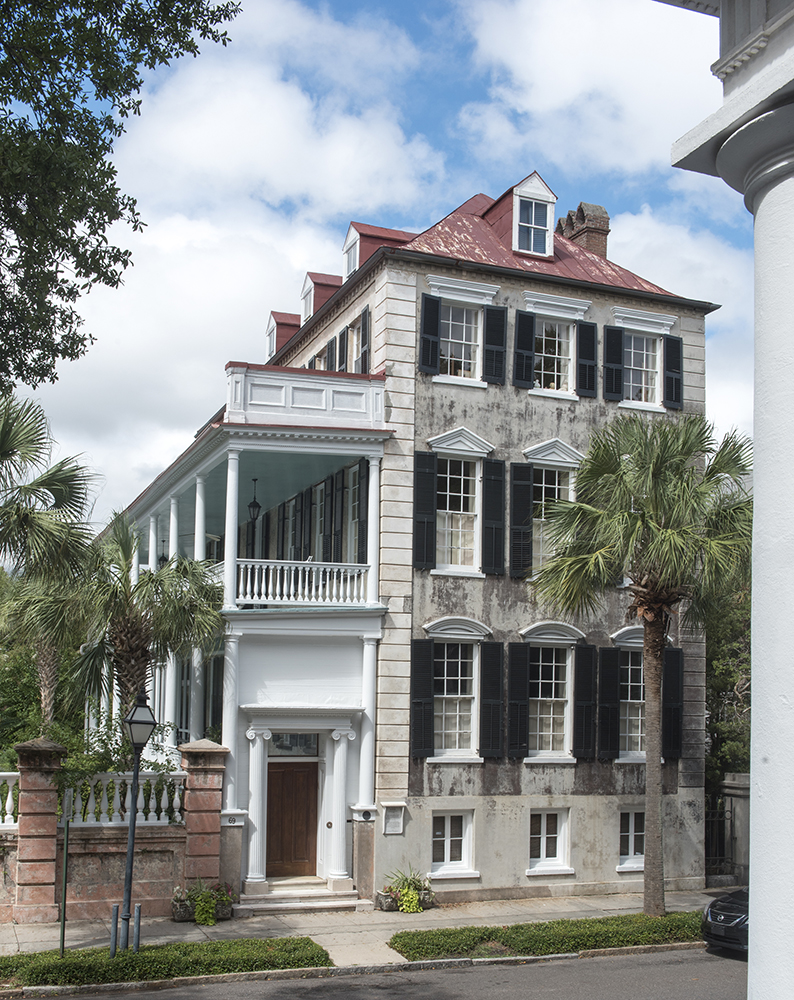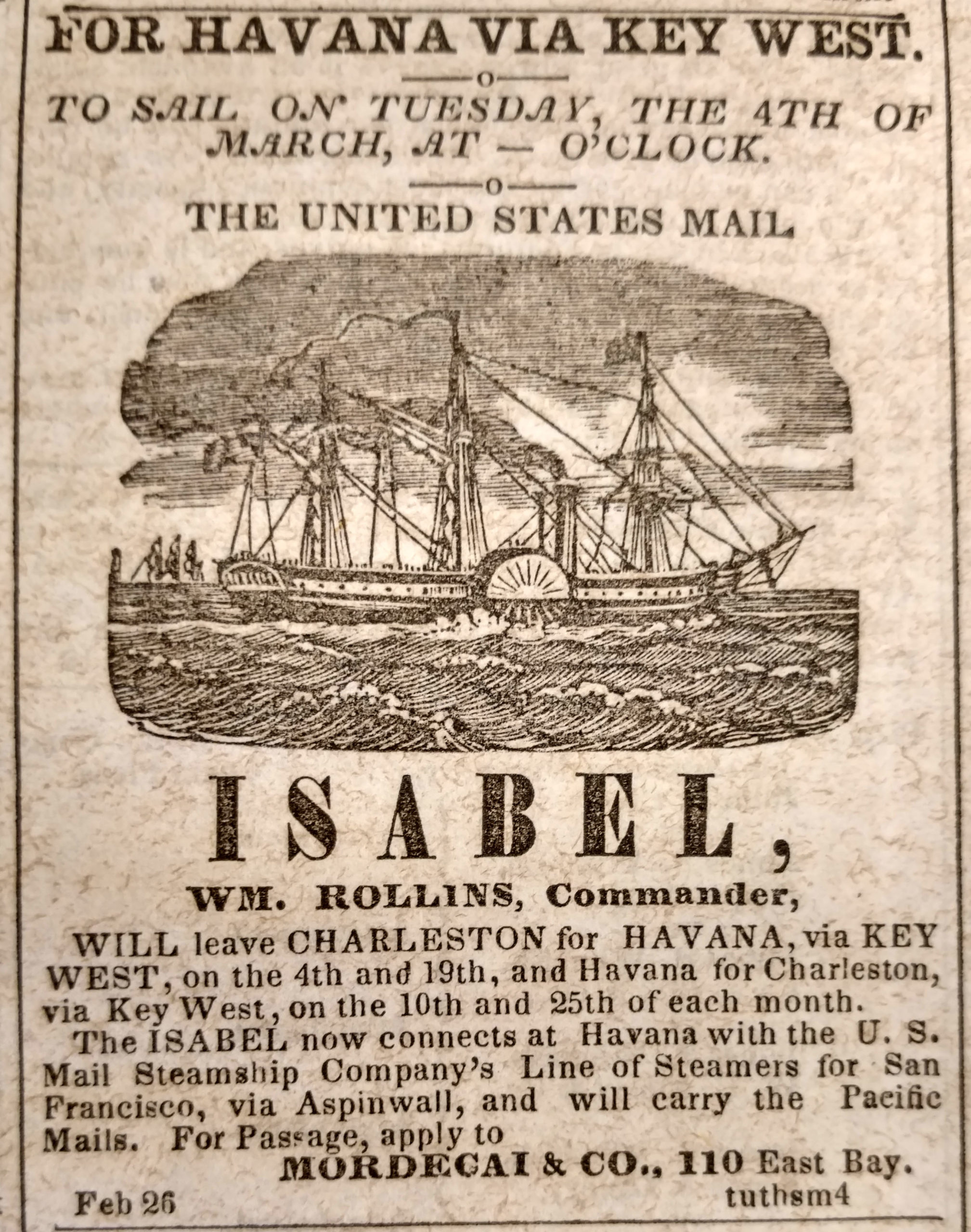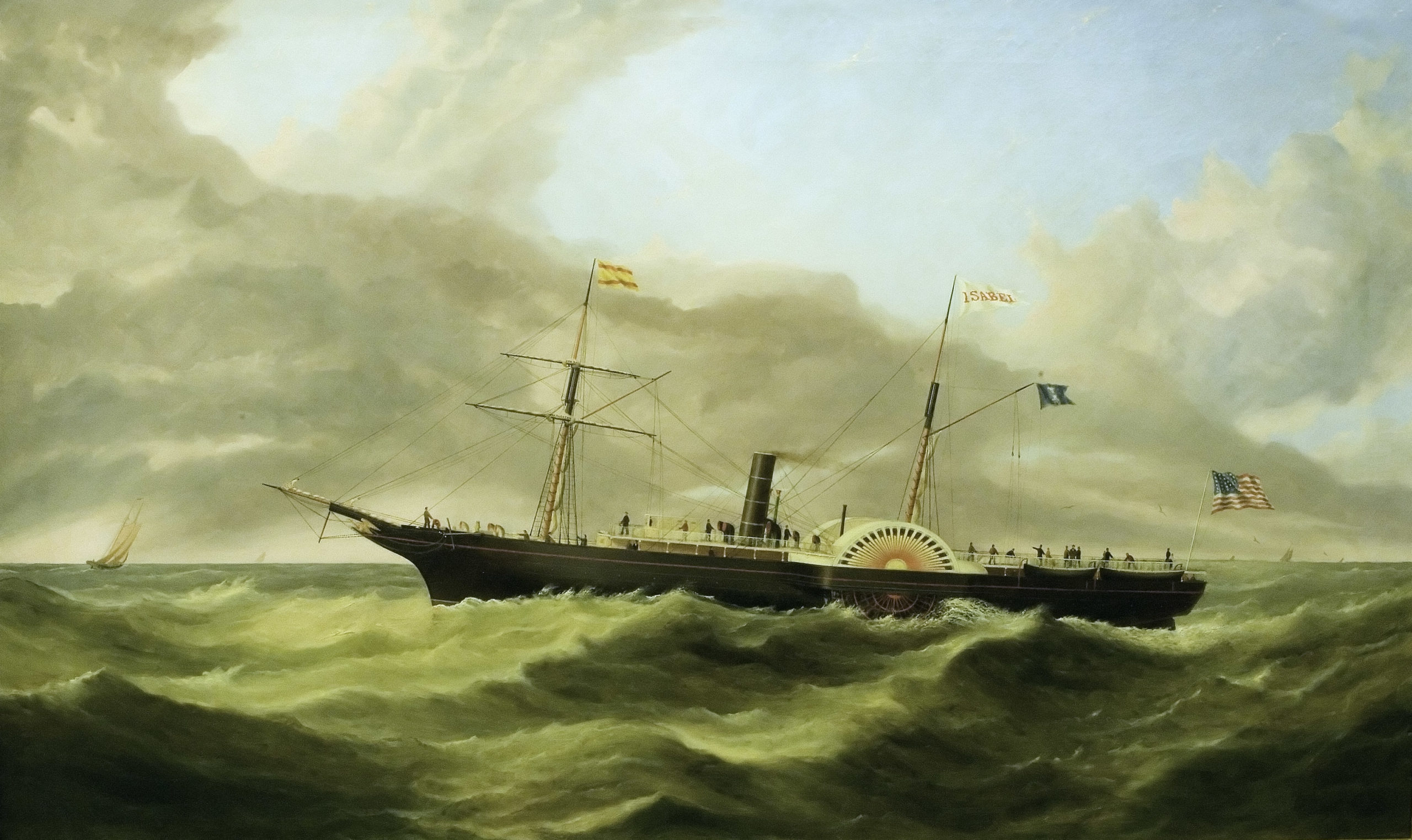Moses Cohen Mordecai
A shipping tycoon and civic colossus
Moses Cohen Mordecai (1804–1888) purchased this grand downtown residence in 1837 after amassing a fortune as a vendue master, or auctioneer, and importer of fruit, sugar, tobacco, and coffee. He also owned a steamship line that, in 1848, secured a federal contract to carry mail between Charleston and Havana, with stops in Savannah, Georgia, and Key West, Florida. In 1850, Mordecai served on the committee for arrangements for the funeral of John C. Calhoun, an architect of secession, but the next year he helped launch the anti-secessionist newspaper Southern Standard. Once hostilities began, however, he threw his support behind the Confederacy: in April 1861, Mordecai’s flagship The Isabel, named for his wife, Isabel Rebecca Lyons (1804–1896), carried Union troops off Fort Sumter, following the opening bombardment of the Civil War.
Mordecai was a highly respected businessman and legislator (he served as state representative from 1845–46, and state senator from 1855–58); he was parnas, or president, of Kahal Kadosh Beth Elohim from 1861 through 1866. Operating out of Baltimore after the war, his company brought home, at no cost to the families, the bodies of South Carolina soldiers killed at Gettysburg.
For more information on Moses Cohen Mordecai, see Thomas J. Tobias papers, Special Collections, College of Charleston.

69 Meeting Street
Once the home of Moses Cohen Mordecai (1804–1888) and Isabel Rebecca Lyons Mordecai (1804–1895). Photo by Jack Alterman, 2016.
Notice for the Isabel
Charleston Mercury, February 28, 1856. The ship, Isabel, was named for Isabel Rebecca Lyons (1804–1896), wife of owner Moses Cohen Mordecai (1804–1888 ).
Isabel Rebecca Lyons Mordecai (1804–1895)
Wife of Moses Cohen Mordecai (1804–1888). Portrait by Theodore Sidney Moïse (1808–1885), ca. 1835. Estate of Judith Tobias Siegel.